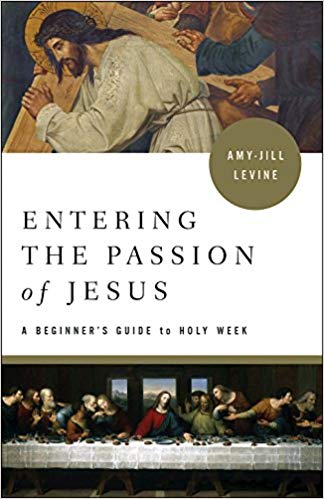Q. As you note, in the Markan anointing story, the word myridzo rather than some form of the word christos is used in reference to the woman anointing Jesus, even though the anointing is on the head, like a kingly anointing. Why do you think Mark doesn’t make more out of Jesus being the anointed one of God in this story, especially since it is in Passion Week, which could also be called unveiling the Messianic secret week?
A. Mark keeps the focus on Jesus’ suffering and death. It would not surprise me if the woman who anoints him at the dinner was thinking of a gracious act of hospitality or even of a royal anointing, and Jesus surprised her by saying that she was anointing him for his burial. The “unveiling of the secret” comes more after Mark’s Gospel ends. The unveiling is in the proclamation of what Paul Harvey (another reference my students don’t know) calls “the rest of the story.” Just as we fill in the rest of Psalm 22, so we fill in the resurrection appearances.
Q. When I read the Markan anointing story side by side with the Johannine one, it appears to me that the Markan story is an edited down version of the Johannine one, with the latter being the original and more eyewitness account. J.B. Lightfoot makes much of how the 4th Gospel gives us fuller versions of various stories that are severely edited in Mark, because the Fourth Gospel is a testimony of an eyewitness of some of Jesus’ Judean adventures, and both Richard Bauckham and I have argued at length it is the testimony of a Judean disciple of Jesus, perhaps even Lazarus=the Beloved Disciple. The Synoptics tell the story from a Galilean and Galilean disciple point of view, the Fourth Gospel from a Judean one. This is why the 4th Gospel gives a much more substantial accounting of the last week of Jesus’ life in various ways and respects, including the trial before Pilate. Unlike the 12, the BD was actually present at the cross, and at Caiphas’s house, and actually took Mary into his house in Bethany where she remained until Pentecost (Acts 1.14). If this is correct, how does this change the way we usually view the Synoptic vs. the Johannine accounts of Passion Week and do you think this line of thinking is historically plausible?
A. I am less positivistic than you and Richard on such matters. First, Luke also has a Judean or at least a Jerusalem focus. Second, to argue that Mark edited down is a guess; as you yourself have often said, “Absence of evidence is not evidence of absence.” Third, the full discussion with Pilate seems more likely to me to be a Johannine construct, in which the Jews are increasingly vilified, and Pilate is shown as backed into a corner. Fourth, as I’ve noted, I think John has access to the Synoptics and wants to complete some of the stories. People continued to tell stories about Jesus – they still do. John fleshes out (that’s the right word for John!) details, but we will continue to debate how much is what actually happened and how much is John’s personal version of the events, based on the stories of others and/or based on what he believes his readers need to hear.












